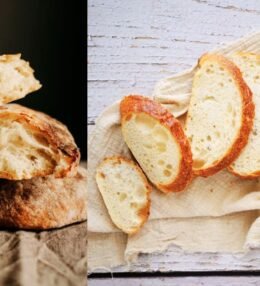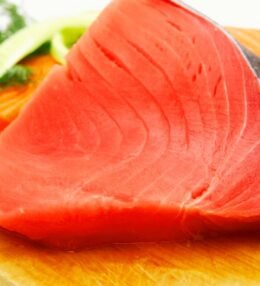In its most basic form, a recipe is a list of ingredients and instructions for preparing a particular dish, drink, or meal. People use recipes to cook foods they enjoy but would not know how to make otherwise. Chefs use recipes to ensure that a dish tastes the same each time it is ordered.
Table of Contents
Ingredients and serving sizes are precise and measured when a recipe is written correctly. Some people find it important to know that a nutrient analysis can be performed using this information to determine the dish’s nutritional composition. The dish’s final result may also depend on the ingredients’ seasoning.
Important Elements of a Recipe
Recipe Title: The title should accurately describe the food, but it can also be artistic. Not every element has to be listed in the title.
Yield: The amount of finished product that a recipe will yield is its yield. It can be stated as the entire weight, volume, or number. The yield amount need to appear reasonable and simple to calculate.
Ingredient List: Among a recipe’s most important components is the ingredient list. The components ought to be arranged chronologically, starting at the top of the list with the ingredient that was used first. When an ingredient appears twice in a recipe, it should be listed with the notation “divided.” Every component needs to be on its line as well.
Serving Size: The quantity of food that goes into preparing one serving of a recipe is known as the serving size. When consumers consume varying amounts of food prepared using the recipe, a nutrient analysis can provide valuable information. Because they both directly affect the results of the nutrient analysis, it is crucial to list the ingredients in precise amounts and to measure the yield and serving size with great care.
Additional Prep: Temperature, cooking time, and preparation time are other factors to consider. The fact that this information provides readers with the ideal temperature and cooking time for the best-quality product makes it useful. Then, without having to read the entire recipe, readers may decide when to begin preparing and preheating the oven.
Measurements
The results of the recipe can depend on certain measurements. It is best practice to write explicit quantities like teaspoons, cups, or ounces rather than using acronyms. This makes it easier for those who are not familiar with the acronyms to follow the recipe correctly and also helps those who are. To prevent misunderstanding, use abbreviations consistently for each item and recipe if that is your preference.
The type and form of substances are also included in the ingredient list. Cooking terminology like sliced, chopped, minced, julienned, cubed, and ground should be used if a fundamental preparation for an ingredient is described.
If utilizing products from the store, specify if they should be frozen, canned, or fresh. This knowledge is important since one cup of fresh or canned green beans may not equal one cup of frozen green beans.
Directions
Another name for the list of instructions is procedures or instructions. The steps in a recipe should be clear, exact, and rational. For instance, step one should specify whether the oven needs to be prepared to a certain temperature. For instance, “Cook the chicken” should be written in a step rather than “Cook the boneless chicken.” It is customary to provide a thorough explanation of the tools or equipment required as soon as they are stated in the steps.
Add the cooking technique, tools, temperature, amount of time the food is cooked, and, if you can, any visible signs of doneness. To enhance the possibility that both home and professional cooks will adopt more food-safety practices, provide them with food-safety advice. “Wash cutting board after touching raw meats,” for instance.
A straightforward statement like “Serve immediately” or “Allow it to cool completely before serving” can suffice. Garnishes like as green onions, cilantro, lemon juice, and sesame seeds can be added according to the plating guidelines.
Nutritional Information
Nutritional information is an important part since, similar to packaged food, it allows the reader to determine whether or not to prepare and eat the dish, as well as how much to eat. Nutrients to report include calories, total fat, saturated fat, trans fat, cholesterol, salt, total carbohydrate, dietary fiber, total and added sugars, protein, vitamin D, calcium, iron, and potassium. The analysis is done on the full crop but is provided per serving.
Food Testing and Evaluation
A good recipe should be tried and tested enough times to guarantee that the instructions are clear and that the finished dish is delicious. When testing, it’s critical to record every step of the cooking process, including the measurements of each ingredient, to determine what has changed and what hasn’t. It is advantageous for people to sample the food to obtain feedback and opinions that are constructive.
A crucial step in developing a recipe is testing the finished product to guarantee high-quality production. A scientific approach called sensory evaluation uses the five senses of humans—taste, smell, sight, and hearing—to assess and evaluate food quality.
The food’s color, size, shape, and texture, as well as whether it appears appetizing overall, can all be taken into account when grading its appearance.
Regarding fragrance, the score will be influenced by any aroma or scent emanating from the dish, regardless of its freshness and richness.
There can be sounds that are crunching, sizzling, or popping. The mouthfeel and texture of the food, including whether it is chunky, gritty, or smooth, are evaluated by touch.
Lastly, the five taste categories of salty, sweet, bitter, sour, and umami are combined to score the overall flavor. Since sensory evaluation is a scientific technique for determining food quality, it may be trusted to increase food quality and consistency objectively. The differences between two food items can be seen when they are compared using the same set of criteria. It helps create a healthier version of a recipe while maintaining its flavor profile.
Conclusion
To wrap things up, a good recipe needs to cover a few key points. It should include the title, how many servings it makes, and the serving size. Nutritional details, prep time, and cooking time are also important so you can decide if the recipe fits your needs. An accurate list of ingredients and clear instructions on the equipment needed are essential for getting the recipe right. Finally, testing and reviewing the recipe is crucial to ensure it works as expected and meets your standards.
Developing the love of cooking and the at-home cook’s skill set can improve diet, save costs, and strengthen social ties—all of which contribute to better health and overall well-being.
Next Post: How to Develop and Write a Recipe?









2 Comments